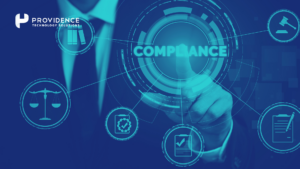It was only a year ago that improving the employee experience was a fundamental tactic in a war for talent. As 2019 was ending, companies were fighting for top employees in a historically competitive labor market in which organizations could not fill positions as fast as they opened.
At the time, prognosticators expected the employee experience trends for 2020 to center upon recruitment and retention. Companies emphasized appealing offerings like efficient technology and meaningful work in their quests to lure talent. But then the COVID-19 pandemic changed business and work in ways that nobody predicted.
Though efficiency and purpose remain attractive today, other elements in the employee experience have crowded them out. More workers are fighting for fewer opportunities as the pandemic continues to roil companies and ravage labor markets. And employees continue to adapt to the opportunities and challenges of working remotely as offices remain closed due to public health concerns.
Companies now emphasize improving productivity and the remote employee experience with HR technology. The employee experience trends of 2021 will center on pursuing similar priorities as well as on helping companies and workers in additional ways.
1) Redesigning the employee experience around remote working
Workplaces will gradually re-open even as the pandemic continues. But many employees will never return or at least they will not work solely at the office as they did.
Forrester expects companies to adopt an “anywhere-plus-office hybrid” model in which more people will work remotely more of the time. Remote workers will settle at a minimum of 300% of pre-pandemic levels, according to Forrester’s predictions for employee experience in 2021.
Employees will gravitate toward jobs and employers that offer opportunities to work remotely. This will affect everything from how companies recruit to their onboarding and retention efforts.
Performance management plans will evolve to evaluate productivity among remote workers, for example. And employers will learn to cultivate collaboration through means like virtual meetings instead of in-person gatherings, SAP Communications Director Susan Galer wrote in an HR trends 2021 column for Forbes.
The whole employee journey will change. No longer will new employees be welcomed at team lunches or receive at-the-elbow training on how to use their office technology. Reinventing the employee experience for virtual workers will be a top HR trend next year, Human Resources Today predicted.
2) Expanding learning
Forrester also predicts that big tech companies will invest in “building learning platforms that will offer both challenges and new opportunities for companies to rethink how they prepare their workforce for the future.”
A Google, Apple, or Amazon may go so far as to “buy a significant stake in an accredited college or university, creating the shortcut they need to extend their current education initiatives and shape their future workforces,” Forrester says. “Savvy companies” will provide continuous education for their employees by partnering with education tech companies, according to Forrester.
Companies also will facilitate continuous education through learning experience platforms that offer personalized learning paths, channels and resources, according to Gartner’s prediction of human capital management trends.
“COVID-19 has pushed organizations to provide a wider range of learning resources to all of their employees. As the digital workplace evolves, these organizations will continue to look to LEPs as a way to aid learner adoption, increase content creation and collaboration, and drive engagement across a variety of stakeholders,” Gartner analysts wrote.
3) Listening to employees
Companies also are listening to employees more intently, Gartner says. They have seen that the companies that have fared the best in the pandemic had a great employee experience before it began.
“Unfortunately, fewer than one-third of companies conduct employee experience surveys at least quarterly, and only slightly more have a voice-of-the-employee program — both of which are foundational for employee experience initiatives. That means that when the pandemic hit, two-thirds of organizations were effectively blind to what their employees were experiencing or what they needed to stay engaged in their work,” Gartner analysts wrote.
Voice-of-the-employee (VoE) solutions use engagement surveys, feedback tools, and other data sources to gather employee sentiment and infer preferences, opinions, and well-being. Gartner explained. “VoE solutions deliver insights with actionable guidance to help improve employee engagement, experience, productivity, and performance,” analysts wrote.
4) Emphasizing well-being
Organizations are focused on workforce effectiveness and well-being, McKinsey noted in describing COVID-19 and the employee experience.
“For decades, need-based theories of motivation have emphasized the importance of need fulfillment on employee motivation and behavior. Applied to employee experience management, organizations should seek to address the most critical, prominent needs of the broader workforce while taking stock of unique needs of different segments and individuals,” McKinsey wrote.
McKinsey’s research shows that 10 employee experience elements account for 60% of differences in outcomes in engagement, well-being, and work effectiveness. Top themes of employee experience, according to McKinsey, include:
- Organizational stability
- Compensation and benefits
- Trust in leadership
- Relationship with company
- Non-financial recognition
5) Personalizing the employee experience
Companies should tailor their approach to the employee experience for each worker because needs and experiences vary, McKinsey says. For example, fathers working at home report higher positive work effectiveness than mothers.
“Our survey indicates that the top priority for remote-working women right now is balancing work and private life. For remote-working men, that need doesn’t even rank in the top ten,” McKinsey wrote.
However, remote-working mothers who report effective time management and schedule flexibility are three times more likely to have a positive state of well-being than women who do not have such work-life balance. Additional differences emerge around data related to distinguishing factors like whether an employee is a parent.
“The lesson for leaders is that a one-size-fits-all approach to experience management simply won’t work. Instead, they must aspire to address individuals in the same manner they do their customers,” McKinsey wrote.
Just as the COVID-19 pandemic has not affected any two individuals the same, it has not had the same effects on every company. But it has transformed the employee experience to some extent for everyone. Remote work is at the center of the employee experience trends for 2021 and the companies that respond best with embracing human experience management (HXM) will succeed the most in the new normal.
Providence Technology Solutions helps organizations improve the efficiency and effectiveness of their HR functions by aligning technology and processes with their business needs. Learn how we could help your organization improve your employee experience through our HCM Consulting services.
Contact us today to discuss your needs online, by email at info@theptsteam.com or by calling 904.719.8264.











